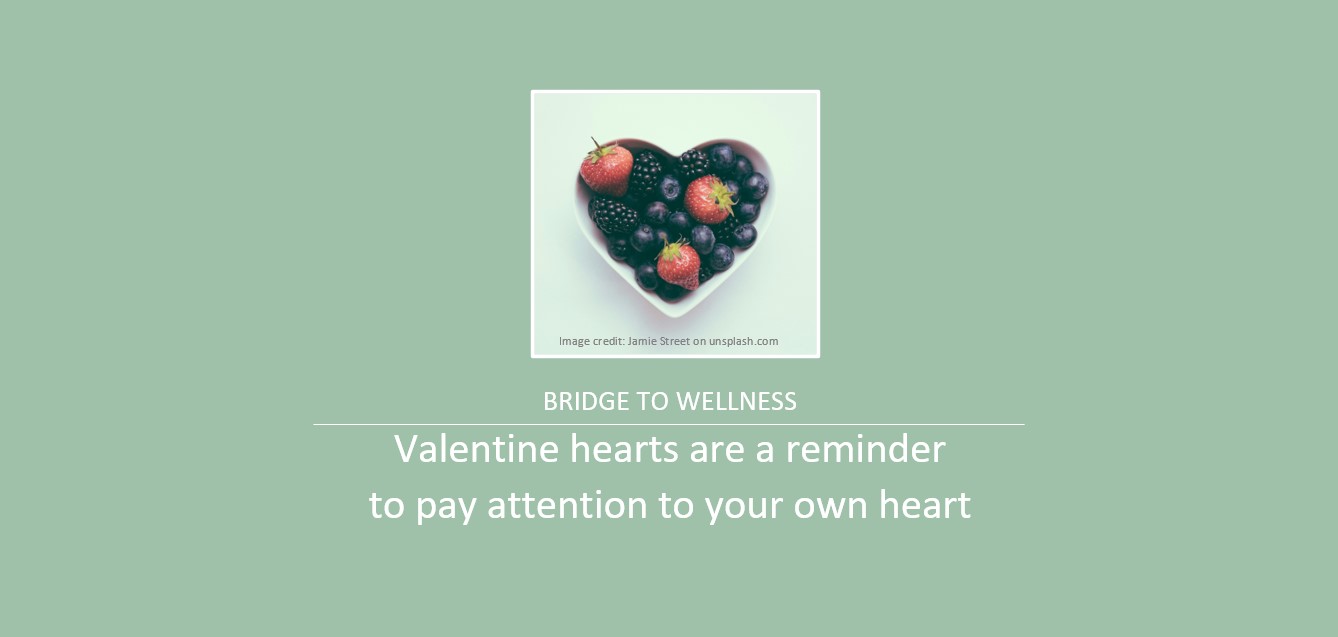
Bridge to Wellness: Valentine hearts are a reminder to pay attention to your own heart
by Jennifer Matthews
It’s February and you’re likely seeing hearts everywhere—hanging in windows, on t-shirts, on the cards we will send, and on the crafts our kids bring home. Cupid isn’t the only reason to be focusing on hearts in February. February is also National Healthy Heart Month.
Heart disease is the leading cause of death in the United States. Approximately 695,000 people in the United States died from heart disease in 2021.
So, what is heart disease? And how can you protect yourself?
The term “heart disease” can describe a variety of different heart conditions. The most common is coronary artery disease or CAD. The coronary arteries supply blood directly to the heart. Diseased arteries can cause decreased blood flow to the heart, resulting in heart attack.
Heart disease is commonly referred to as a “silent” condition. Often, it’s not diagnosed until after an event has occurred. Early detection and treatment can make a big difference in disease management. Therefore, it is important to know the signs and symptoms of a cardiac event.
- Heart attack: Symptoms can vary but can include chest pain or discomfort, upper back or neck pain, indigestion, heartburn, nausea and/or vomiting, extreme fatigue, upper body discomfort, dizziness, and shortness of breath.
- Arrhythmia: Feels like a fluttering feeling in the chest. Also referred to as palpitations.
- Heart failure: Shortness of breath, fatigue, or swelling of the feet, ankles, abdomen or neck veins.
Although there are genetic links to heart disease, it helps to pay attention to certain preventable risk factors:
- High blood pressure and high cholesterol are risk factors. Routine physician monitoring of blood pressure and cholesterol is recommended for the majority of adults.
- Being overweight or obese is a risk factor. Taking steps to maintain a healthy weight can work wonders for your overall health.
- An unhealthy diet can contribute to heart disease risks. Diets high in fat, preservatives, and sodium can contribute to unhealthy arteries. Pay attention to food labels and the amount of added sugar, sodium, saturated fats, trans fats, and cholesterol in food. Consuming heart healthy foods such as fruits, vegetables, and whole grains can improve overall health and protect your heart.
- Being physically inactive can increase your risk of heart disease. Physical activity can benefit your body in many ways, including by preventing heart disease. Physical activity helps prevent unhealthy weight gain, reduces the risk of many chronic diseases, helps reduce feelings of anxiety, improves sleep, and improves bone and musculoskeletal health.
- Drinking too much alcohol can put you at risk. Heavy drinking is defined as 8 or more drinks per week for women, and 15 or more drinks per week for men. Limiting alcohol intake can help prevent heart disease and many other chronic conditions.
So, as you start to notice hearts around town for Valentines Day, let it be a reminder to think about and promote the health of your own heart.




